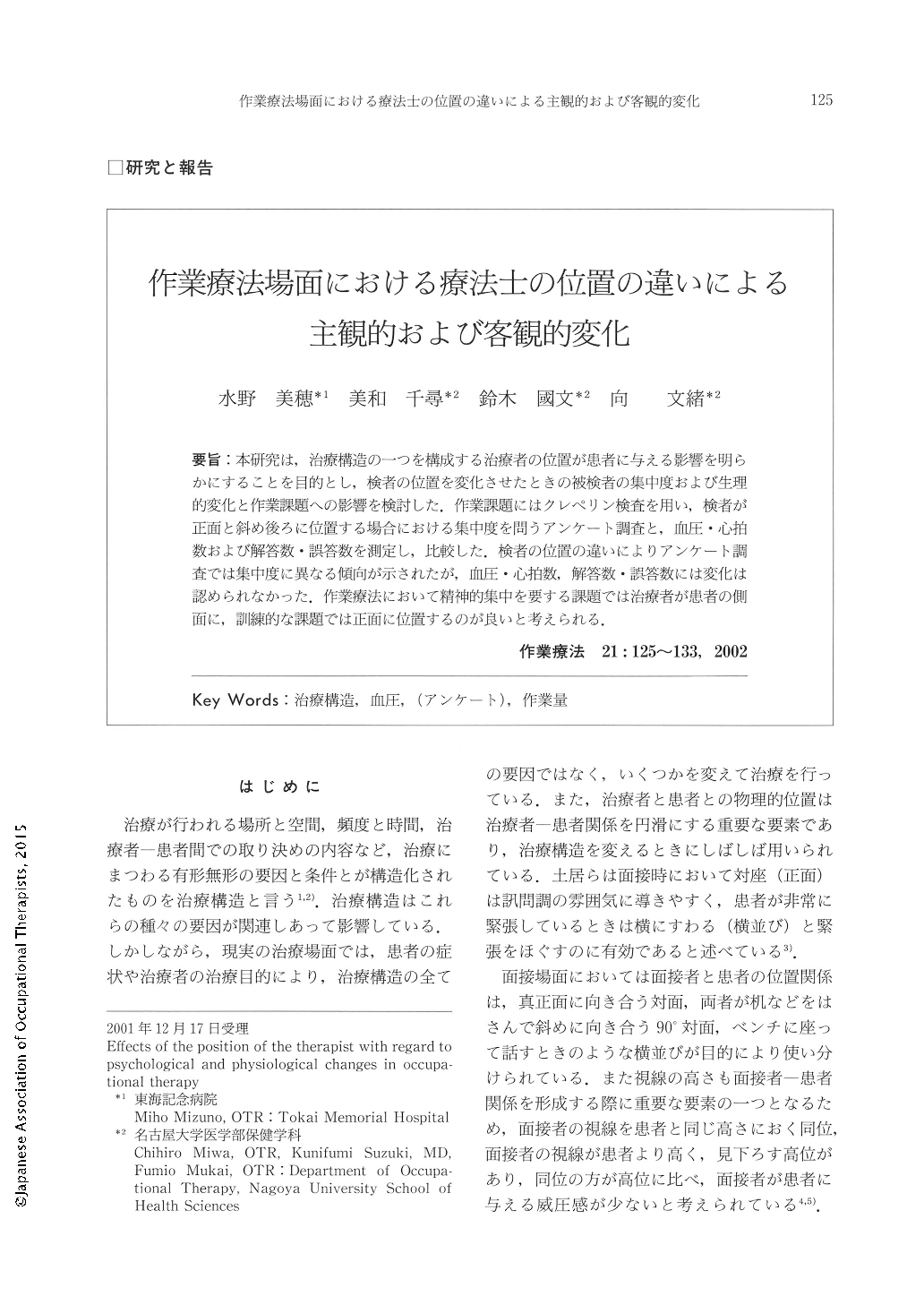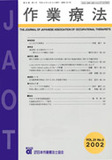Japanese
English
- 販売していません
- Abstract 文献概要
- 1ページ目 Look Inside
- 参考文献 Reference
要旨:本研究は,治療構造の一つを構成する治療者の位置が患者に与える影響を明らかにすることを目的とし,検者の位置を変化させたときの被検者の集中度および生理的変化と作業課題への影響を検討した.作業課題にはクレペリン検査を用い,検者が正面と斜め後ろに位置する場合における集中度を問うアンケート調査と,血圧・心拍数および解答数・誤答数を測定し,比較した.検者の位置の違いによリアンケート調査では集中度に異なる傾向が示されたが,血圧・心拍数,解答数・誤答数には変化は認められなかった.作業療法において精神的集中を要する課題では治療者が患者の側面に,訓練的な課題では正面に位置するのが良いと考えられる.
The purpose of this study is to clarify the effects on the patient in relation to the therapist's positioning (one aspect of the therapeutic structure) and then to compare the concentration and physiological change along with the effects on the task when the therapist changes positions.
We used the Kraepelin test for the task and compared the questionnaires that ask about concentration, blood pressure, and heart rate. Then we evaluated the answers and errors with regard to therapist positioning.
In the quesionnaires, we observed that concentration results tended to be different, from one to the other, with regard to the therapist's positioning, but the answers and errors observed no change with regard to blood pressure and heart rate. As for the occupational therapy, it may be more effective for the therapist to position him/herself beside the patient in the task that requires concentration, while positioning him/herself in front of the patient in the task that requires training.

Copyright © 2002, Japanese Association of Occupational Therapists. All rights reserved.


